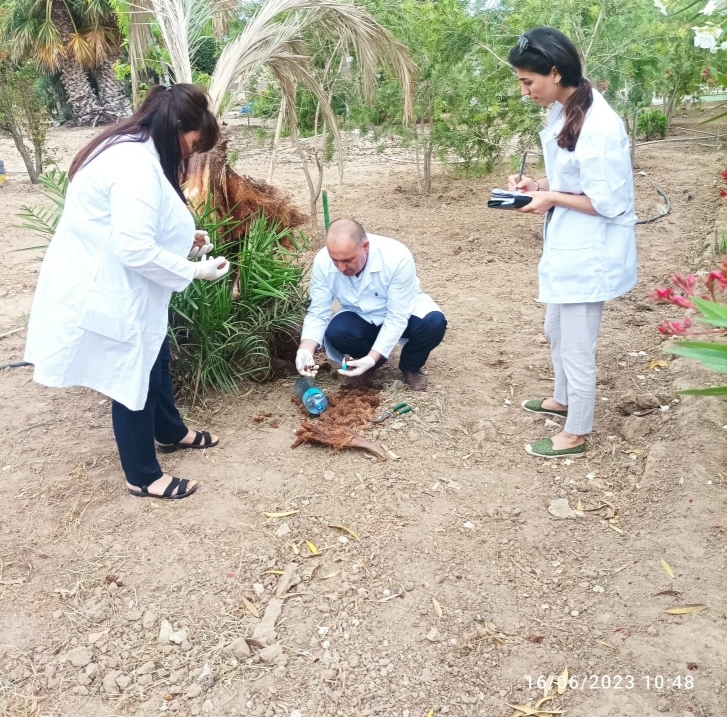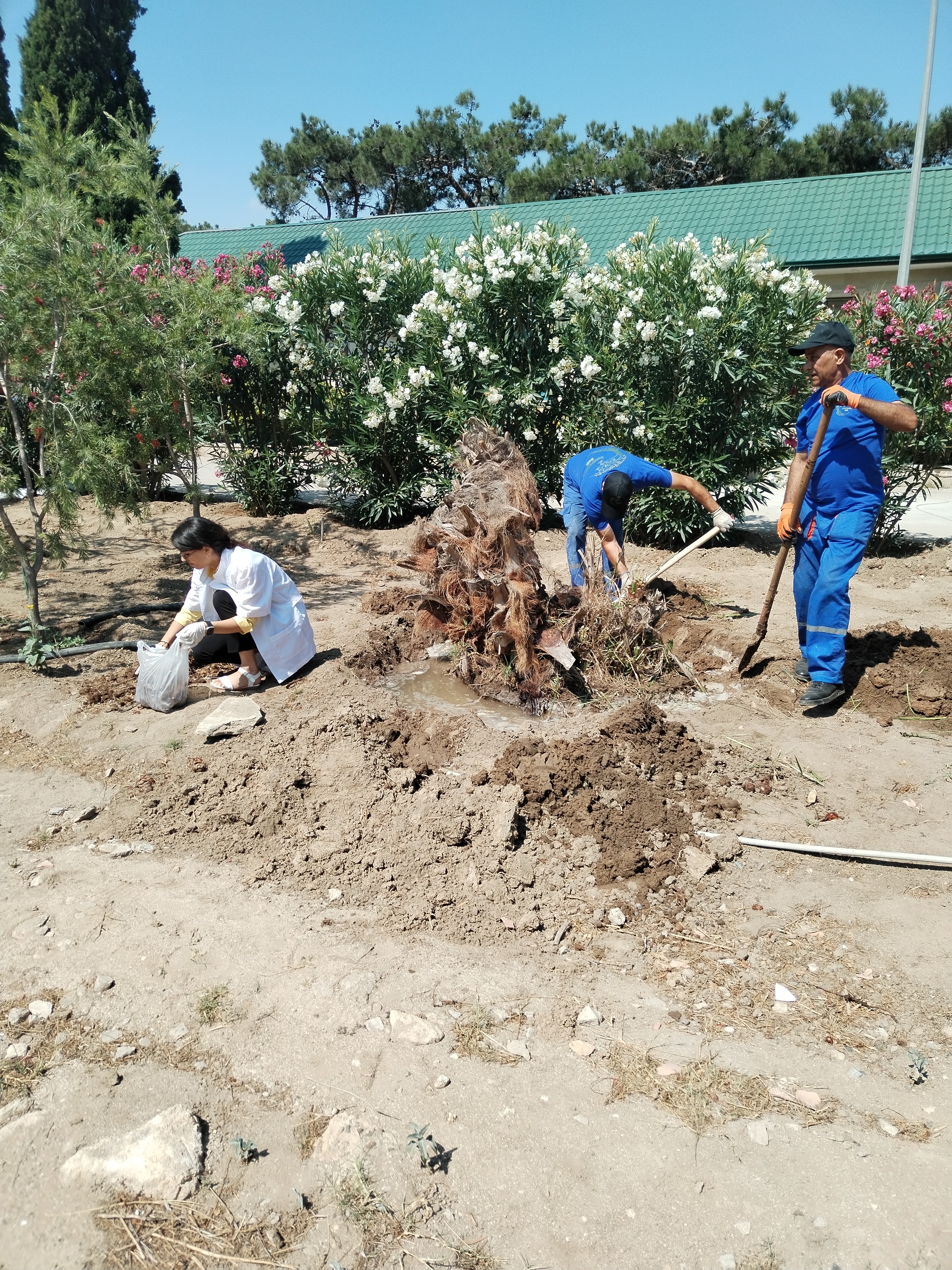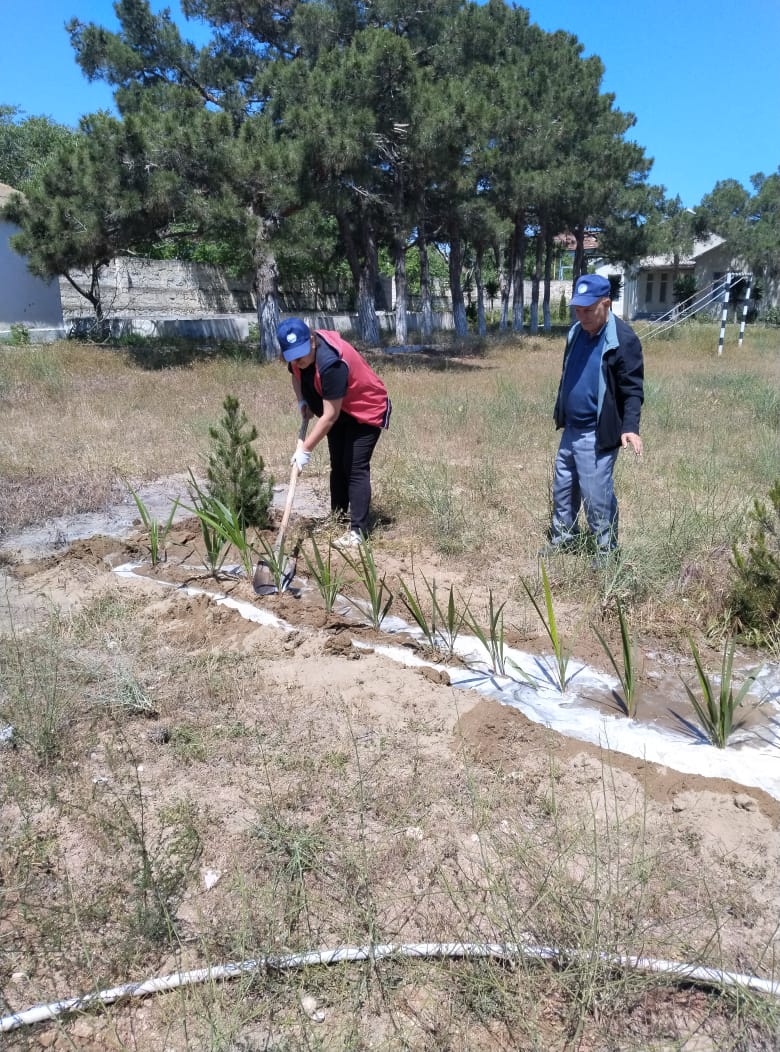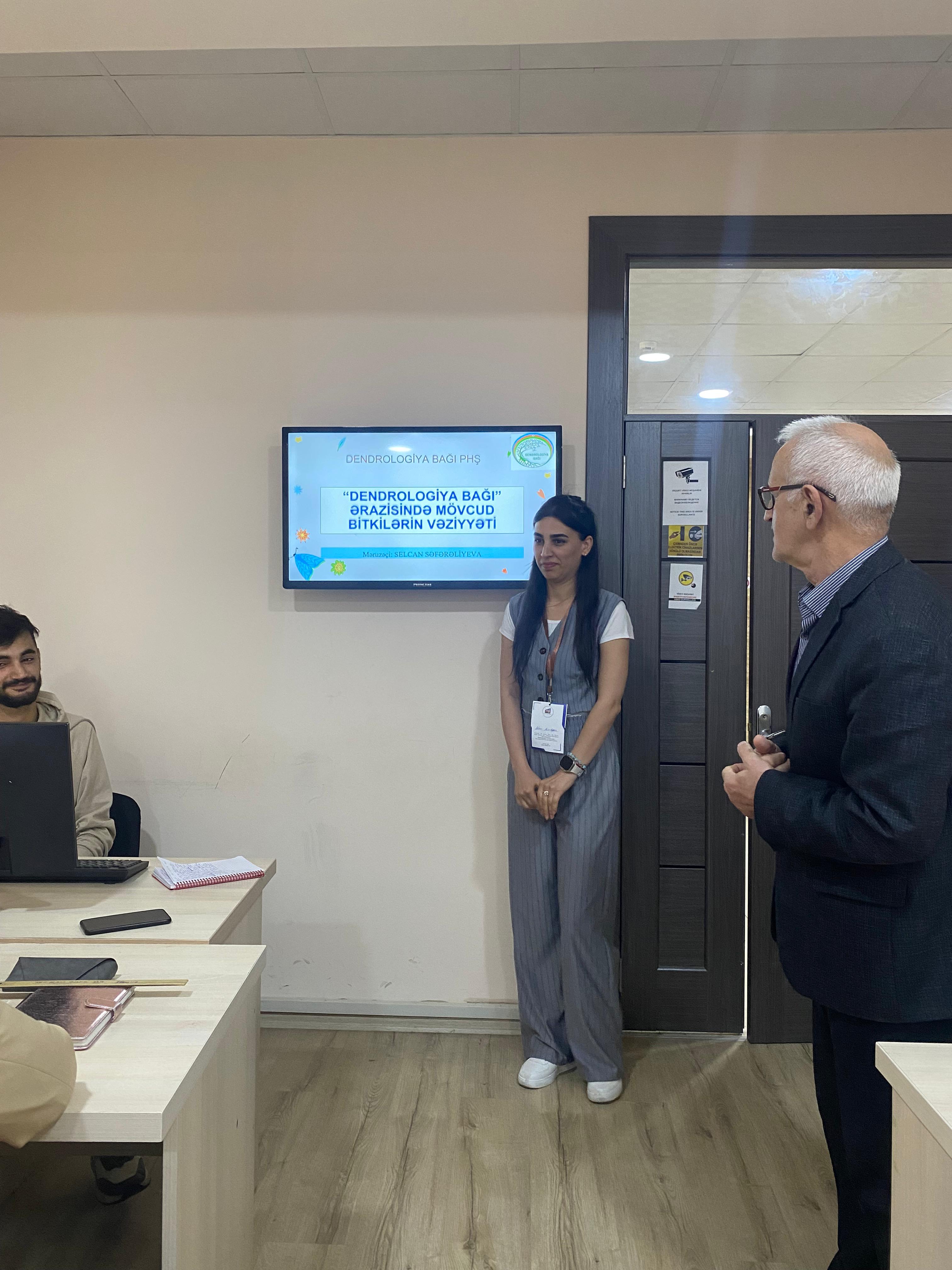On the territory of "Dendrology Garden" PLE integrated measures are being taken against the red palm beetle
As a result of the monitoring carried out by the "Ensuring the protection and development of plants" department on the territory of "Dendrology Garden" PLE was detected Phoenix canariensis Cha. (Canary date) a pest organism – Red palm beetle (Rhynchophorus ferrugineus (Oliver, 1790)).
A pest that has received quarantine status has the ability to multiply and destroy plants. Mainly, they damage palm plants in the developing stage and cause their destruction. It is very difficult to detect the pest in the initial stage of infection. A pest is determined according to its morphological signs, as well as the damage it inflicts on the plant. Once the palm plant is fully infected, the determination becomes easier.
As a result of the observations, it was found that certain signs to detect the infected species: large pores with damaged fibers on the trunk and bark (in some cases, their surroundings are covered with a brown sticky liquid), crunching sounds are produced when the larvae feed.
Rhynchophorus ferrugineus is an insect whose length of an adult individual reaches 35-40 mm, the body is elongated, the upper part is flat, the upper wings are hard, the color varies from light-brown to dark-brown, and the back is dark-spotted.
Females are slightly larger than males, the upper wings are relatively convex, and the joints of the head are long. On the upper part of the body of males there is a "pipik" consisting of orange colored hairs. The size of the larva is up to 5 cm "C"-shaped without legs, the body is whitish-milky, the head is brown. The pupae of the insect resemble an adult individual.
The red palm beetle produces one generation per year. Individuals in deep diapause can live for two or more years. The egg stage lasts 7 days, the larval stage lasts 3-4 months, and the pupal stage lasts 14-21 days. One female individual has the ability to lay 150-180 (maximum 350) eggs on average.
Insects lay their eggs in tiers and leaf axils about 50 cm below the top end of the stem or height point. Hatched larvae enter the stem of the plant, where they feed on plant tissues and thus destroy the plant.
Damage caused by larval feeding creates gaps (hollows) in the stem and leaf axil, weakening the mechanical strength of the stem and thus separating the leaf base from the stem. Feathery leaves shrivel, fade, turn pale green, curl inward, fall to the stem, or hang down.
In the second stage of infection, all the leaves bend over the trunk as if resembling a roof, and the damage is practically not visible until the palm tree is destroyed and eventually leads to destruction.
A number of chemical preparations have been tested against the red palm beetle found on the date palm. Chemical control measures are based on the use of insecticides.
Preparations containing imidacloprid (Hekvidor) and chlorpyrifos (Priban) were used in the experiment. A hand sprayer was used to spray the tree, the amount of working solution was 10 1/ tree. The biological efficiency of the drug tested against the red palm beetle in Absheron conditions is 92-95%.
Rhynchophorus ferrugineus was determined to completely destroy one palm species in a mature individual plot. For this reason, taking into account the invasive nature of the harmful organism on foreign host plants, in order to ensure the protection and development of other plants, the department prepared an ACT in compliance with phytosanitary rules and removed the plant from its roots and destroyed it by burning it outside the field.
Newly imported plants from countries where the pest is found should be subjected to a phytosanitary inspection, and if a damaged plant is found, it should be destroyed.





